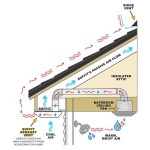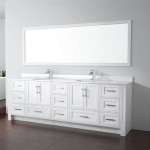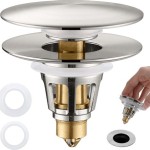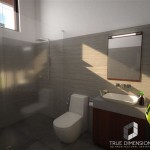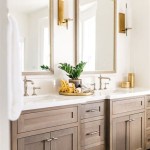Can You Use a Dresser As Bathroom Vanity Sinks?
Repurposing furniture is a popular trend in interior design, allowing homeowners to create unique and personalized spaces while potentially saving money. One common question that arises is whether a dresser can be effectively used as a bathroom vanity. The answer is yes, with careful planning and execution, a dresser can be successfully transformed into a functional and aesthetically pleasing bathroom vanity. However, several factors must be considered to ensure the project is a success and avoids potential problems related to moisture, plumbing, and structural integrity.
The allure of using a dresser as a bathroom vanity stems from several factors. Dressers often possess a distinct character and style that can add charm and personality to a bathroom, especially in contrast to mass-produced, standardized vanities. Older dressers, in particular, may feature intricate details and solid wood construction that are no longer commonly found in modern furniture. Furthermore, repurposing a dresser can be an environmentally conscious choice, as it gives a new lease on life to an existing piece of furniture rather than contributing to landfill waste. The cost savings are also a significant motivator, as a vintage dresser may be acquired for a fraction of the price of a new vanity, particularly if it is already owned.
Despite the advantages, transforming a dresser into a bathroom vanity requires careful consideration and thorough preparation. It is not simply a matter of placing a sink on top of a dresser. The project involves addressing plumbing requirements, protecting the wood from moisture damage, and ensuring the structural stability of the dresser to support the weight of the sink and countertop. Without proper planning and execution, the repurposed dresser may become a breeding ground for mold and mildew, suffer water damage, or even collapse under the weight of the sink.
Assessing the Dresser's Suitability
The first crucial step in repurposing a dresser is to assess its suitability for the task. Not all dressers are good candidates for conversion. Several factors need to be evaluated to determine if the dresser is structurally sound and appropriate for use in a bathroom environment.
Material and Construction:
The type of wood used and the construction method are paramount. Solid wood dressers are generally preferable to those made of particleboard or MDF (Medium-Density Fiberboard), as solid wood is more resistant to moisture and generally stronger. However, even solid wood requires protection from water damage. The joinery of the dresser should also be inspected. Dovetail joints, mortise and tenon joints, and other robust joinery methods indicate a well-constructed piece that can withstand the rigors of bathroom use. Avoid dressers with loose joints or significant signs of deterioration.Size and Dimensions:
The size of the dresser should be proportionate to the bathroom's dimensions. A large dresser in a small bathroom can make the space feel cramped, while a small dresser in a large bathroom may appear insignificant. Consider the available floor space, the height of the dresser, and the desired countertop area. Additionally, the depth of the dresser should accommodate standard plumbing connections. A dresser that is too shallow may not provide enough space for the drainpipe and water supply lines.Style and Aesthetics:
The style of the dresser should complement the overall aesthetic of the bathroom. Whether the bathroom is modern, traditional, rustic, or eclectic, the dresser should fit seamlessly into the design scheme. Consider the color, finish, and hardware of the dresser in relation to the other elements in the bathroom, such as the tile, fixtures, and lighting. A dresser with ornate details may be well-suited for a traditional bathroom, while a dresser with clean lines may be more appropriate for a modern bathroom.Drawer and Door Configuration:
The arrangement of drawers and doors should be practical for bathroom storage. Drawers are useful for storing smaller items such as toiletries and makeup, while cabinets behind doors can accommodate larger items such as towels and cleaning supplies. Consider which drawers or doors will need to be modified to accommodate the sink basin and plumbing. Some drawers may need to be removed entirely, while others may need to be cut to fit around the drainpipe.Preparing the Dresser for Conversion
Once a suitable dresser has been selected, the next step is to prepare it for conversion into a bathroom vanity. This involves several tasks aimed at protecting the wood from moisture, creating space for plumbing, and reinforcing the structural integrity of the dresser.
Sealing and Waterproofing:
This is arguably the most important step in the entire process. Bathrooms are inherently humid environments, and water splashes are inevitable. Protecting the wood from moisture is crucial to prevent warping, rotting, and mold growth. Start by thoroughly cleaning the dresser to remove any dirt, dust, or old finishes. Sand the surface to create a smooth, even texture. Apply multiple coats of a high-quality waterproof sealant to all surfaces, including the interior of drawers and cabinets. Polyurethane and epoxy resins are excellent choices for their durability and water resistance. Pay particular attention to the edges and corners, as these are the most vulnerable to water penetration.Modifying Drawers and Doors:
Depending on the placement of the sink and the plumbing configuration, some drawers and doors may need to be modified. Remove any drawers that will interfere with the sink basin or plumbing. If possible, salvage the drawer fronts to maintain a consistent aesthetic. Other drawers may need to be cut to accommodate the drainpipe. Use a jigsaw or hole saw to create openings for the plumbing. Ensure that the edges of the cut wood are sealed with a waterproof sealant to prevent moisture from seeping into the core.Reinforcing the Structure:
The weight of the sink and countertop can place significant stress on the dresser's structure. Reinforce the dresser by adding additional supports, such as corner braces or plywood backing. Attach the supports securely to the frame using screws and wood glue. This will help to distribute the weight evenly and prevent the dresser from sagging or collapsing. Consider adding a solid wood top or a layer of plywood to the top of the dresser to provide a stable base for the countertop and sink.Creating Plumbing Access:
Cut holes in the back of the dresser to allow for plumbing connections. Use a hole saw to create openings for the water supply lines and the drainpipe. Measure carefully to ensure that the holes are aligned with the existing plumbing in the bathroom. Seal the edges of the holes with a waterproof sealant to prevent moisture from entering the dresser. If necessary, create access panels in the back of the dresser to facilitate future plumbing repairs or maintenance.Installing the Sink and Countertop
After preparing the dresser, the next step is to install the sink and countertop. This requires careful planning and precise execution to ensure a secure and watertight installation.
Choosing a Sink:
Select a sink that complements the style of the dresser and the overall aesthetic of the bathroom. Common sink types include undermount sinks, drop-in sinks, and vessel sinks. Undermount sinks are installed underneath the countertop, creating a seamless and modern look. Drop-in sinks are installed from above, with the rim resting on the countertop. Vessel sinks sit on top of the countertop, adding a unique and sculptural element to the vanity. Consider the size and shape of the sink in relation to the size of the dresser and the available countertop space.Selecting a Countertop:
The countertop should be durable, water-resistant, and aesthetically pleasing. Common countertop materials include granite, marble, quartz, and wood. Granite and quartz are excellent choices for their durability and resistance to stains and scratches. Marble is a luxurious option, but it is more porous and requires more maintenance. Wood countertops can add warmth and character to the bathroom, but they must be properly sealed and maintained to prevent water damage. The countertop should be cut to fit the top of the dresser, with a cutout for the sink. Seal the edges of the countertop with a waterproof sealant to prevent moisture from seeping into the core. Consider the thickness of the countertop in relation to the height of the sink and the overall height of the vanity.Plumbing Connections:
Connect the water supply lines and the drainpipe to the sink. Use flexible supply lines and a P-trap to ensure a secure and leak-free connection. Tighten all fittings securely, but avoid over-tightening, which can damage the pipes. Test the plumbing for leaks by running water into the sink and checking for any drips or wet spots. If any leaks are detected, tighten the fittings or replace the faulty components.Securing the Sink and Countertop:
Secure the sink to the countertop using adhesive or mounting clips, depending on the type of sink. Ensure that the sink is level and aligned properly. Secure the countertop to the top of the dresser using screws and construction adhesive. Ensure that the countertop is flush with the edges of the dresser and that it is securely attached.By carefully assessing the dresser's suitability, preparing it for conversion, and installing the sink and countertop with meticulous attention to detail, it is possible to repurpose a dresser into a functional and aesthetically pleasing bathroom vanity, adding character and personality to the bathroom while potentially saving money.

Stunning Bathroom Tour Dresser Into Double Vanity

How To Make A Dresser Into Vanity Tutorial An Oregon Cottage

Repurposed Dresser Converted To Bathroom Vanity Reinvented Delaware

A Pro Renovator S 6 Tips For Turning Dresser Into Bathroom Vanity

How To Convert A Dresser Into Bathroom Vanity The Little By Home

Mid Century Dresser Into Vanity Bright Green Door

Turn A Vintage Dresser Into Bathroom Vanity

Flipping Houses Home Renovation In Silicon Valley

Repurposed Dresser Converted To Bathroom Vanity Reinvented Delaware

Repurposed Dresser Converted To Bathroom Vanity Diy Antique
